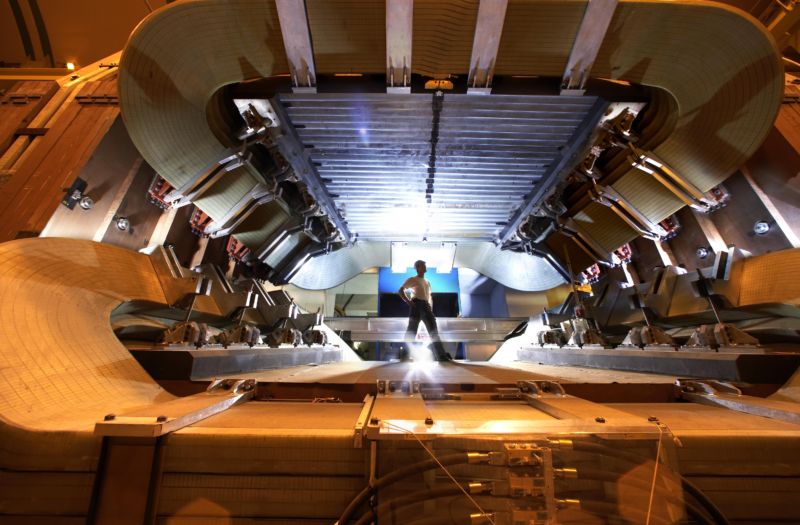Oddities start to emerge from deeper analyses of LHC data
Ars Technica » Scientific Method 2017-04-29

Enlarge / The magnets of the LHCb detector. (credit: NSF/CERN)
The Large Hadron Collider has generated a staggering amount of data in its years of operation; it's enough data that we'll be analyzing it for years after the collider shuts down. In the meantime, priority has gone to searches for big-ticket items like the Higgs boson (tick) and dark matter particles (MIA). But with time, some other analyses have managed to get done, and they're beginning to turn up unexpected results.
Quark-gluon plasma
In the current Universe, quarks are held together by gluons to form particles like protons and neutrons. In the first fractions of a second after the Big Bang, however, the Universe was too hot and dense for this to work. Instead, there was a thick soup of quarks and gluons that freely intermingled rather than settling down to form particles.
This quark-gluon plasma was first detected in Brookhaven's Relativistic Heavy Ion Collider, and the LHC was designed to study it at higher energies. To do that, time is allocated each year for collisions involving lead atoms, which contain lots of protons and neutrons and thus provide the quark-gluon plasma with lots of starting material. But a new paper in Nature Physics indicates that it might not be absolutely necessary to smash heavy atoms together to create the quark-gluon plasma; the protons used in normal collisions will do.